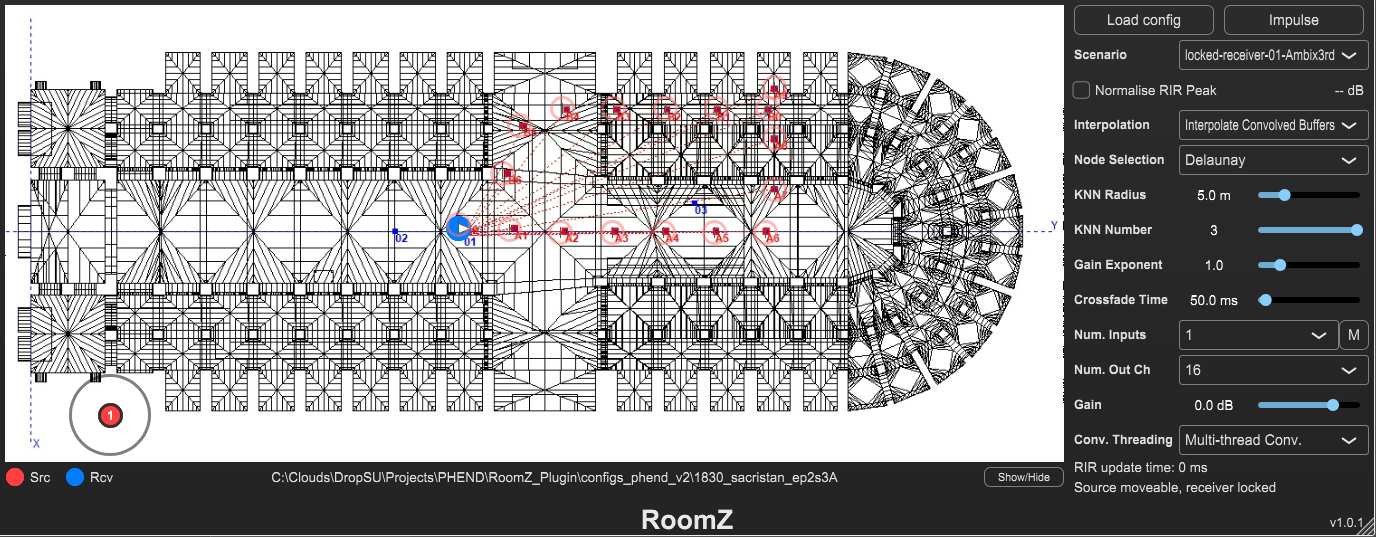Auralisations
Audio rendering tool, bridging research and production
Auralization, a method for replicating realistic auditory experiences in virtual settings, is used in architectural acoustics and sound system design [1, 2]. This technique involves convolving anechoic sound with Room Impulse Responses (RIRs) to simulate how sound travels in specific spaces. Dynamic auralizations increase realism by interpolating between RIRs as sources or receivers move [3,4], though tools for such dynamic simulations are limited [5].

Example RoomZ Notre-Dame scene with receiver near transept and moving source trajectory.
To bridge the gap between acoustic research and practical application, we developed RoomZ, an audio plugin for digital audio workstations. It allows for dynamic auralizations by adjusting source and receiver positions across RIR grids, featuring fast multi-core convolution and custom navigation scenarios with multi-channel outputs (monaural, binaural, ambisonic, etc.). The interface presents a 2D graphical map for panning, dynamically applying weights based on geometric distributions to convolve the input with appropriate RIRs. RoomZ enables the accurate rendering of environments like a medieval Notre-Dame, directly integrating acoustic research into production, thus enhancing virtual and augmented reality applications.
Bibliography
[1] Vorländer, M., “Auralization: Fundamentals of acoustics, modelling, simulation, algorithms and acoustic virtual reality”, Springer Nature, 2020, (url).
[2] Thery, D., Boccara, V., and Katz, B. F.G., “Auralization uses in acoustical design: a survey study”, J Acoust Soc Am, 145(6), pp. 3446–3456, 2019, (url).
[3] Savioja, L., Huopaniemi, J., Lokki, T., and Väänänen, R., “Creating interactive virtual acoustic environments”, J Aud Eng Soc, 47(9), pp. 675–705, 1999, (url).
[4] De Muynke, J., Poirier-Quinot, D., and Katz, B. F.G., “Effect of interpolation artefacts on perceived stability of nearby sources in a navigable reverberant environment”, J Aud Eng Soc, 2024, (url).
[5] McKenzie, T. and Schlecht, S. J. and Pulkki, V., “Auralisation of the Transition between Coupled Rooms”, International Conference on Immersive and 3D Audio (I3DA), 2021, (url).